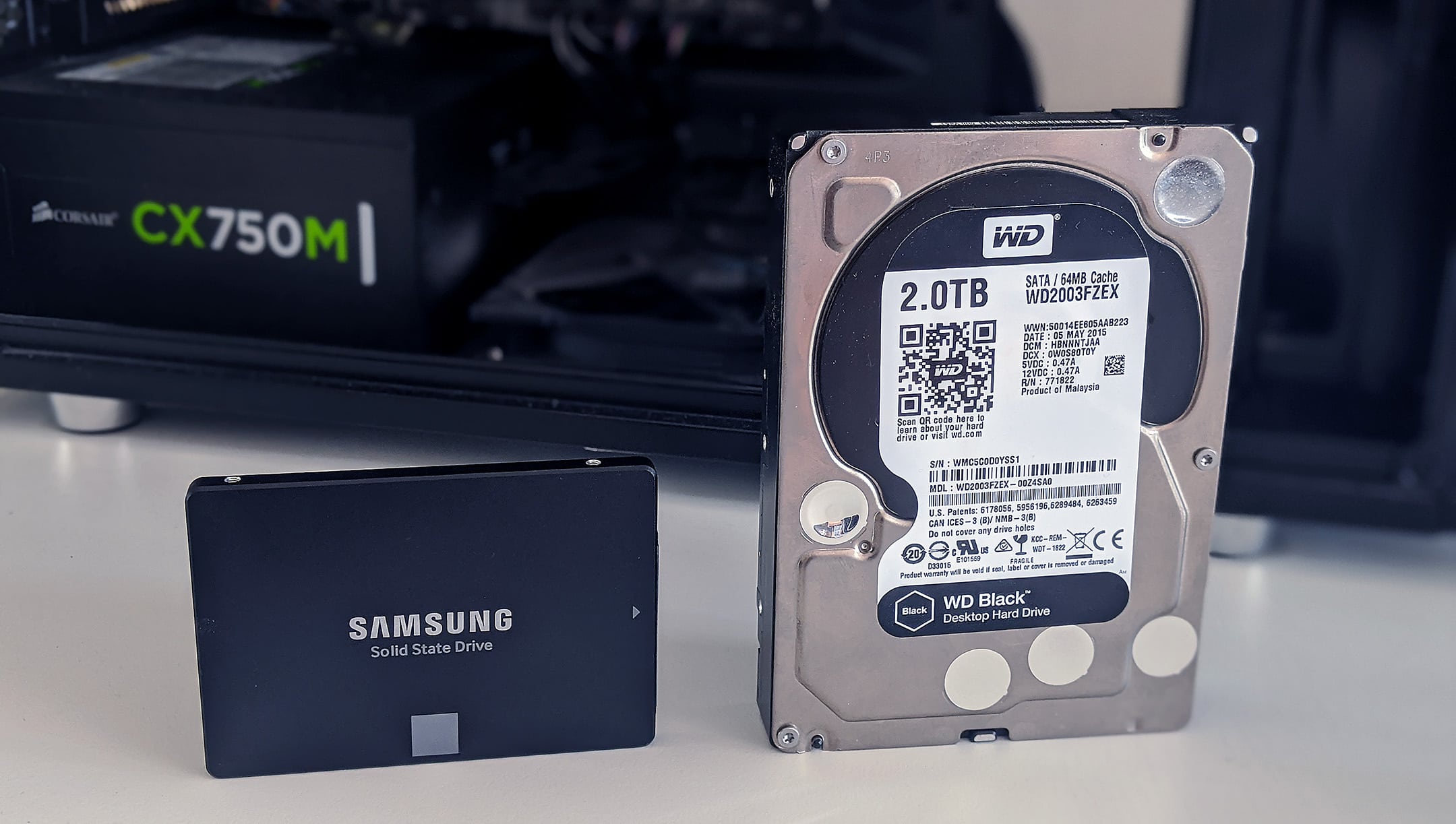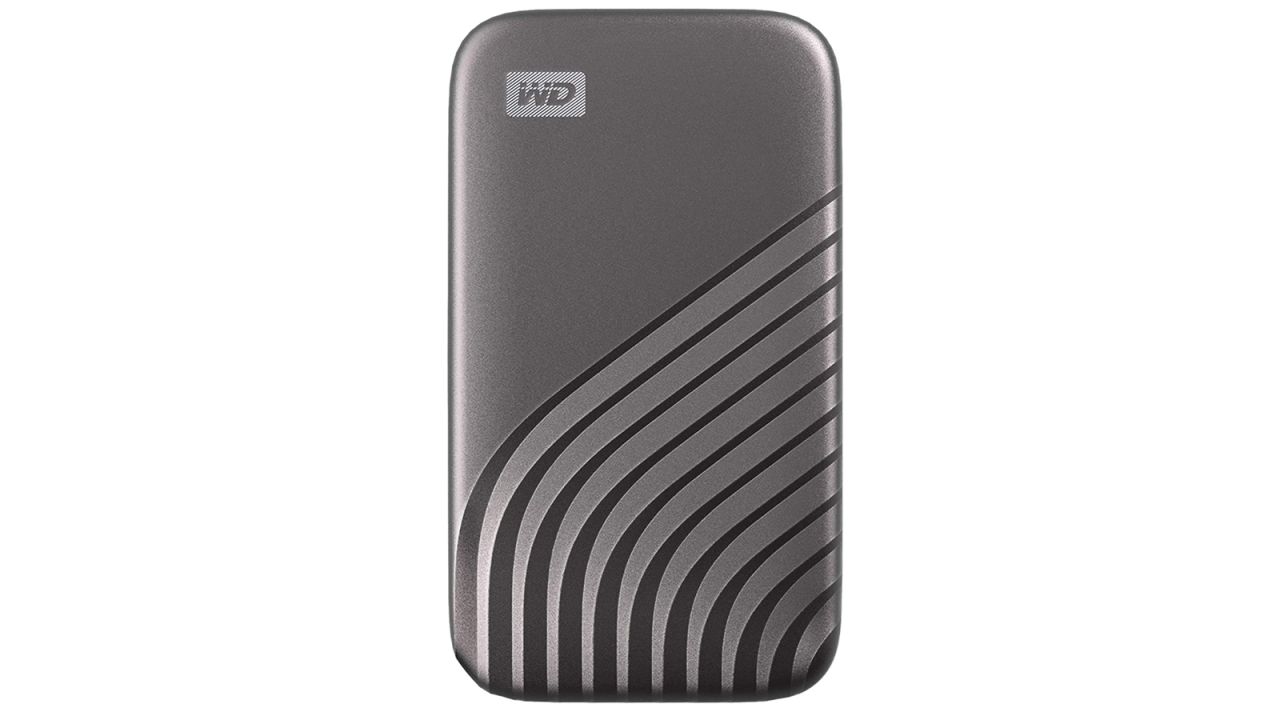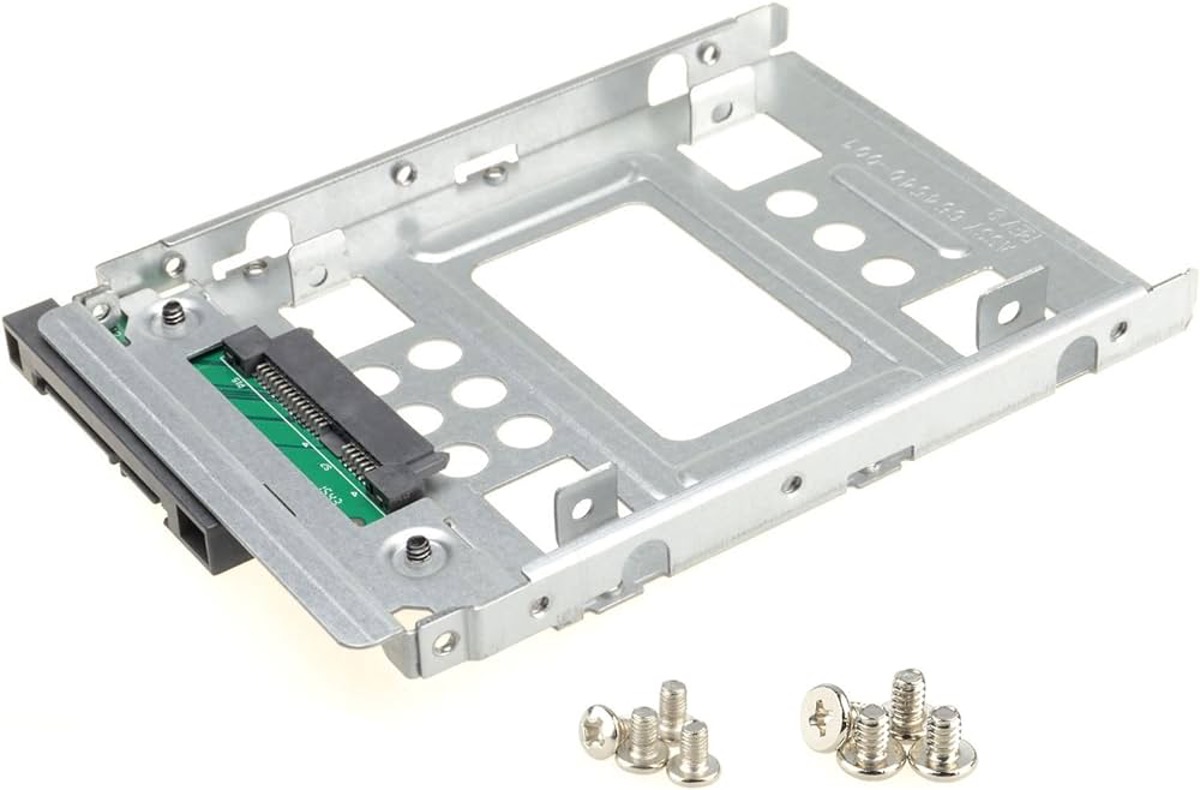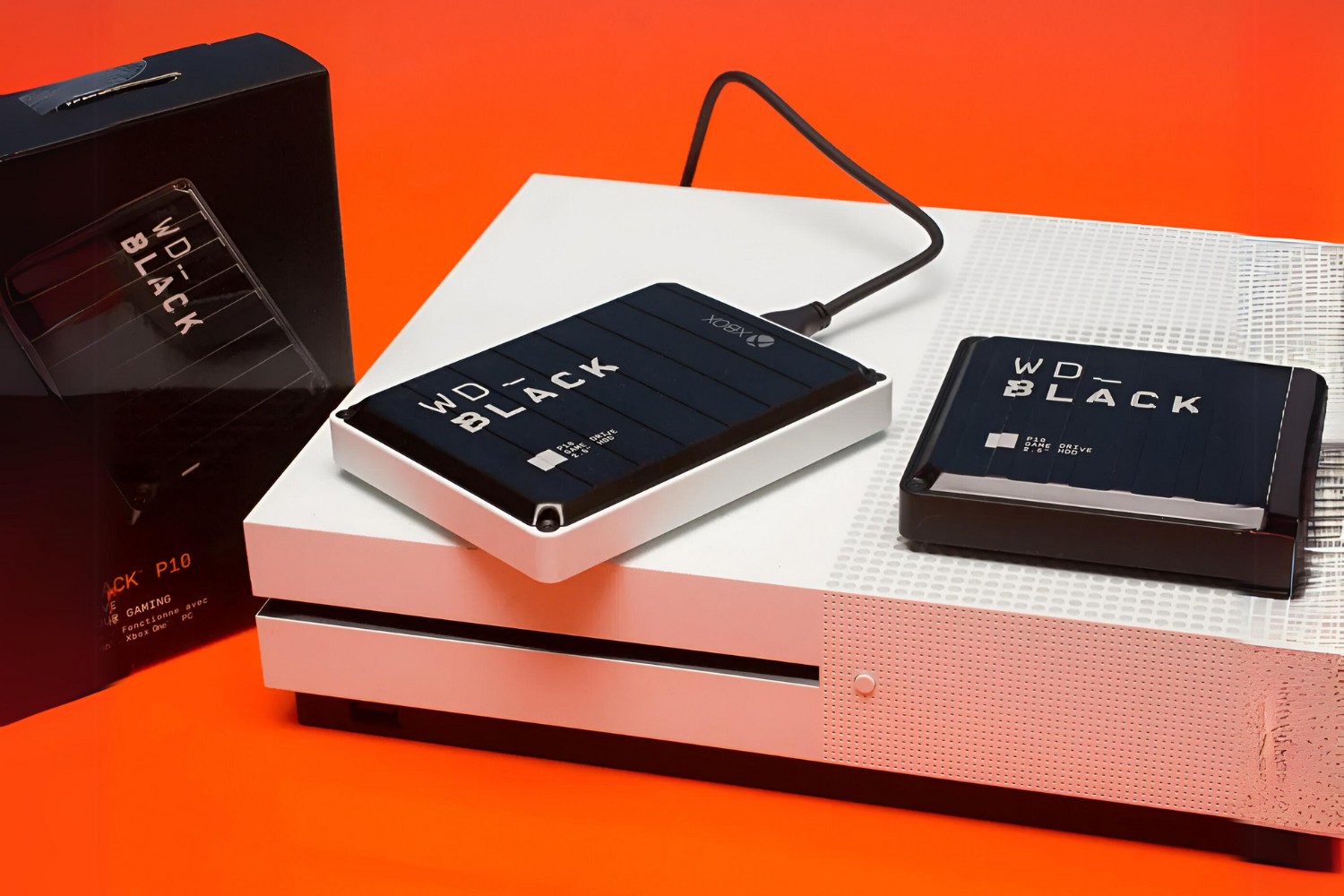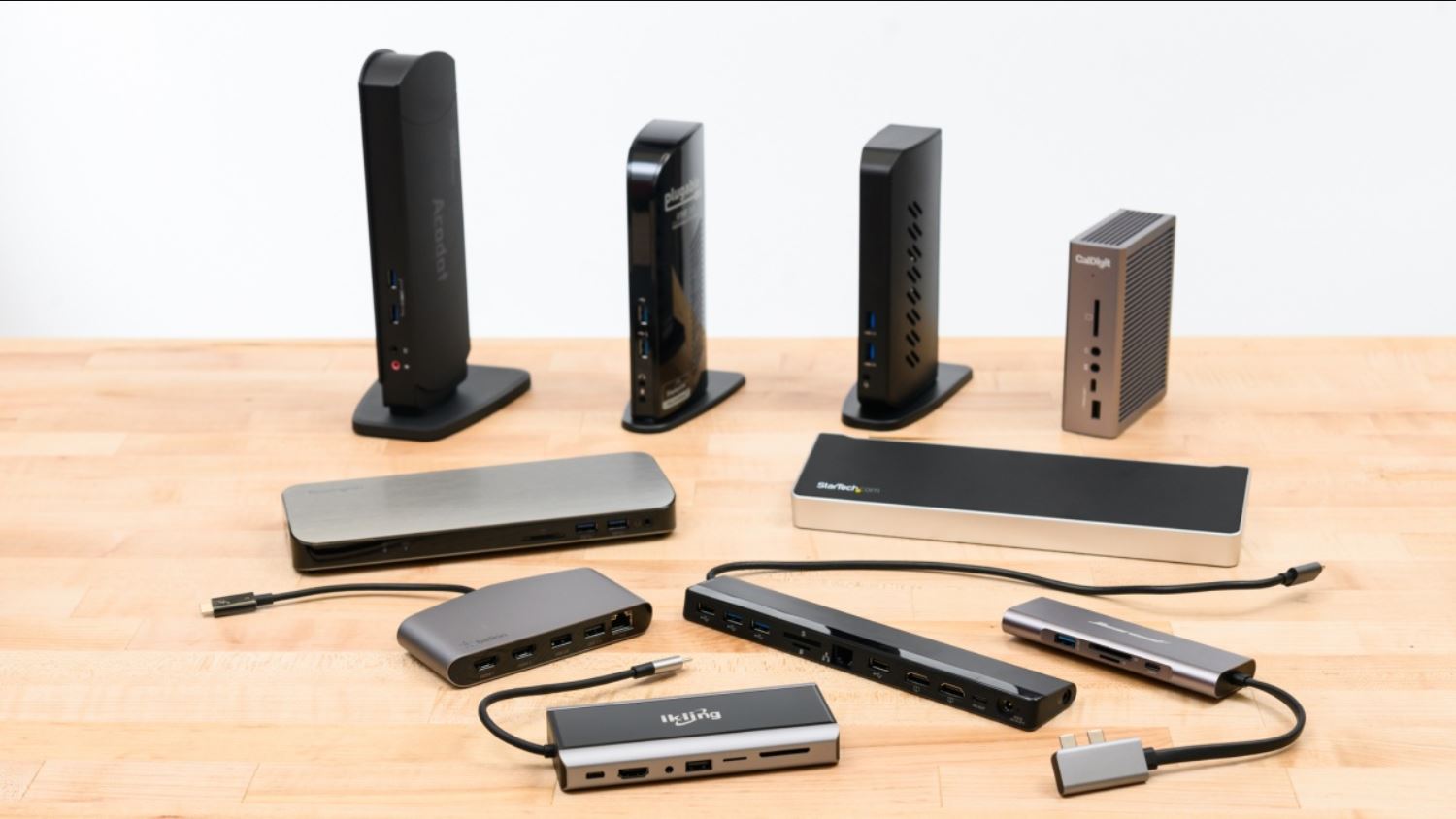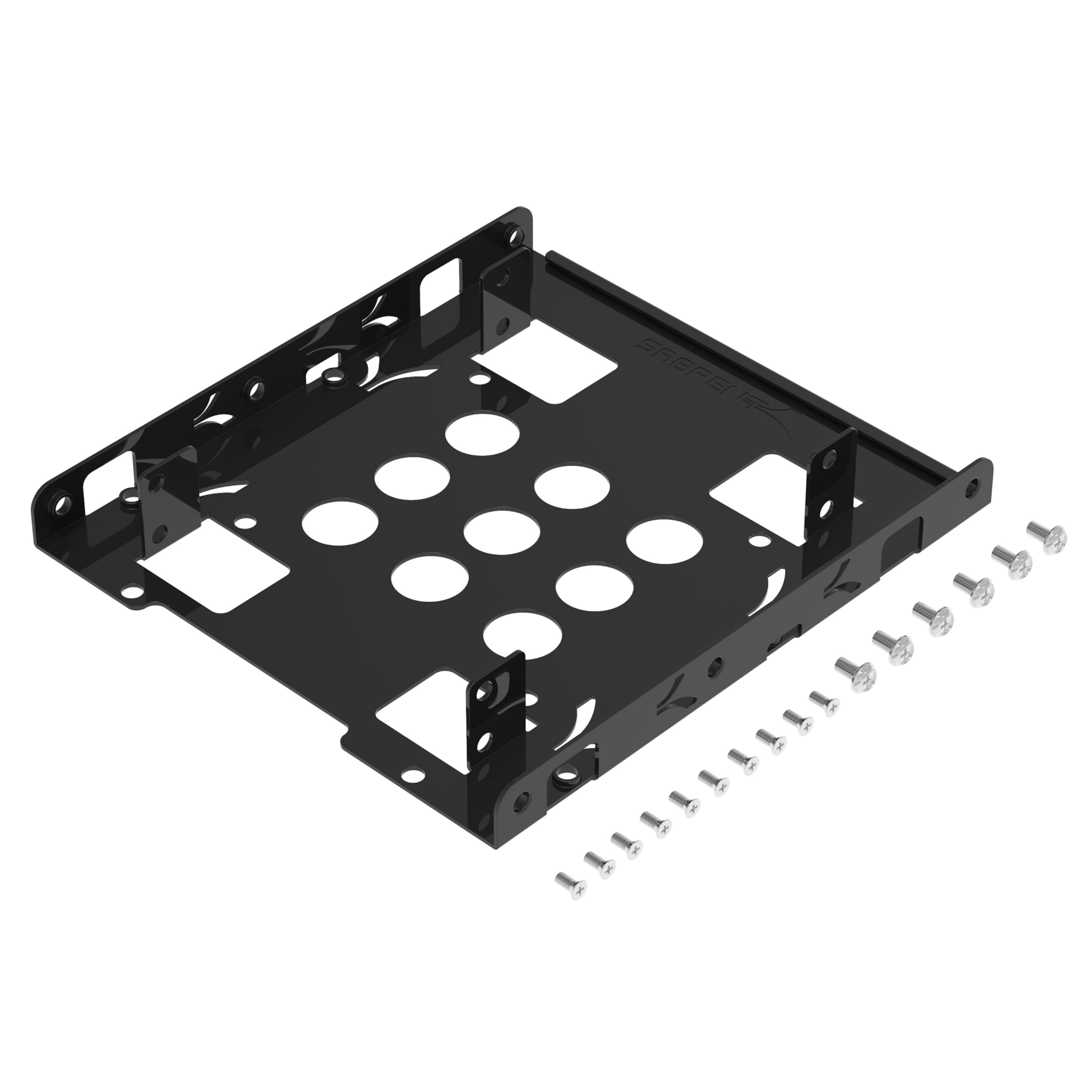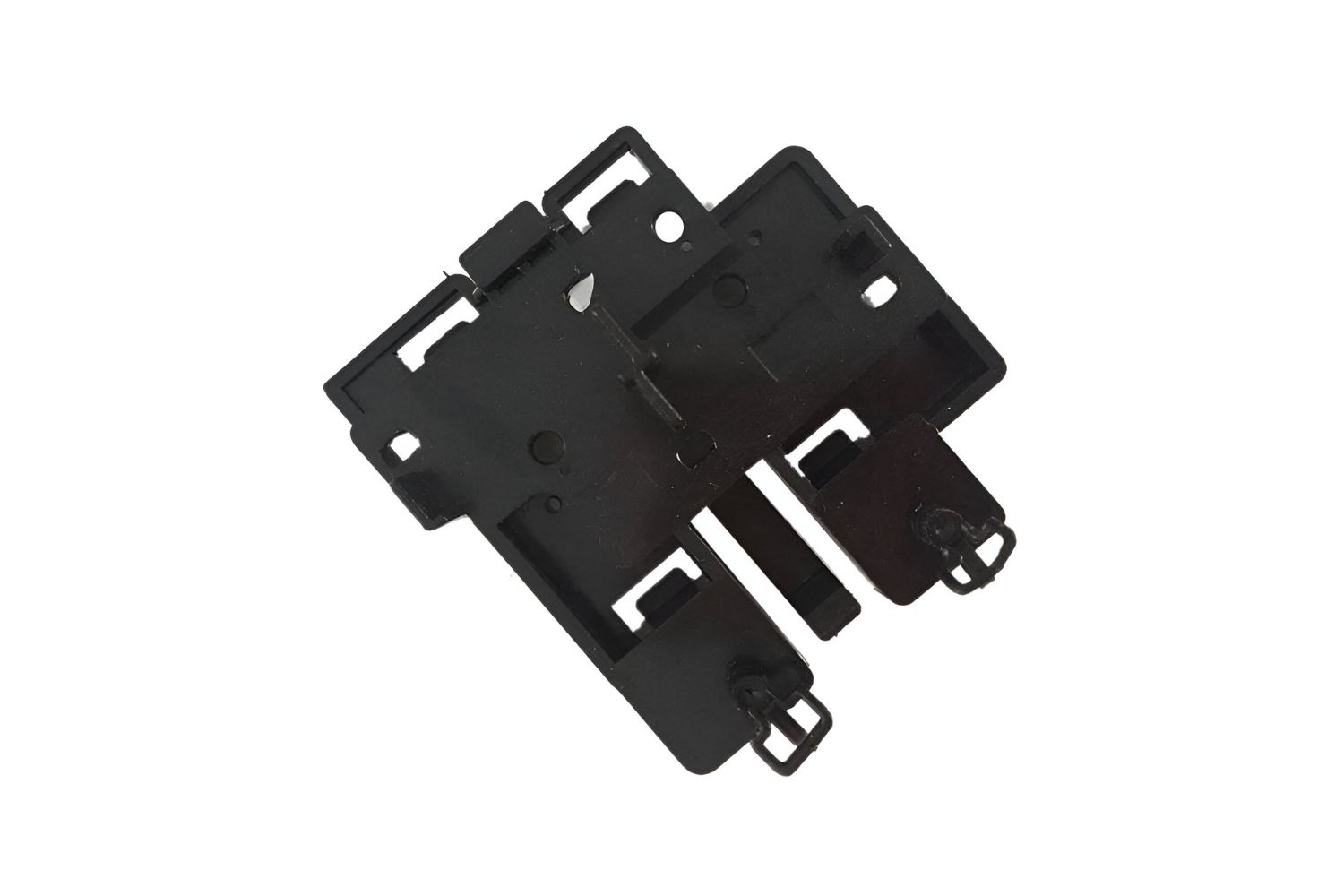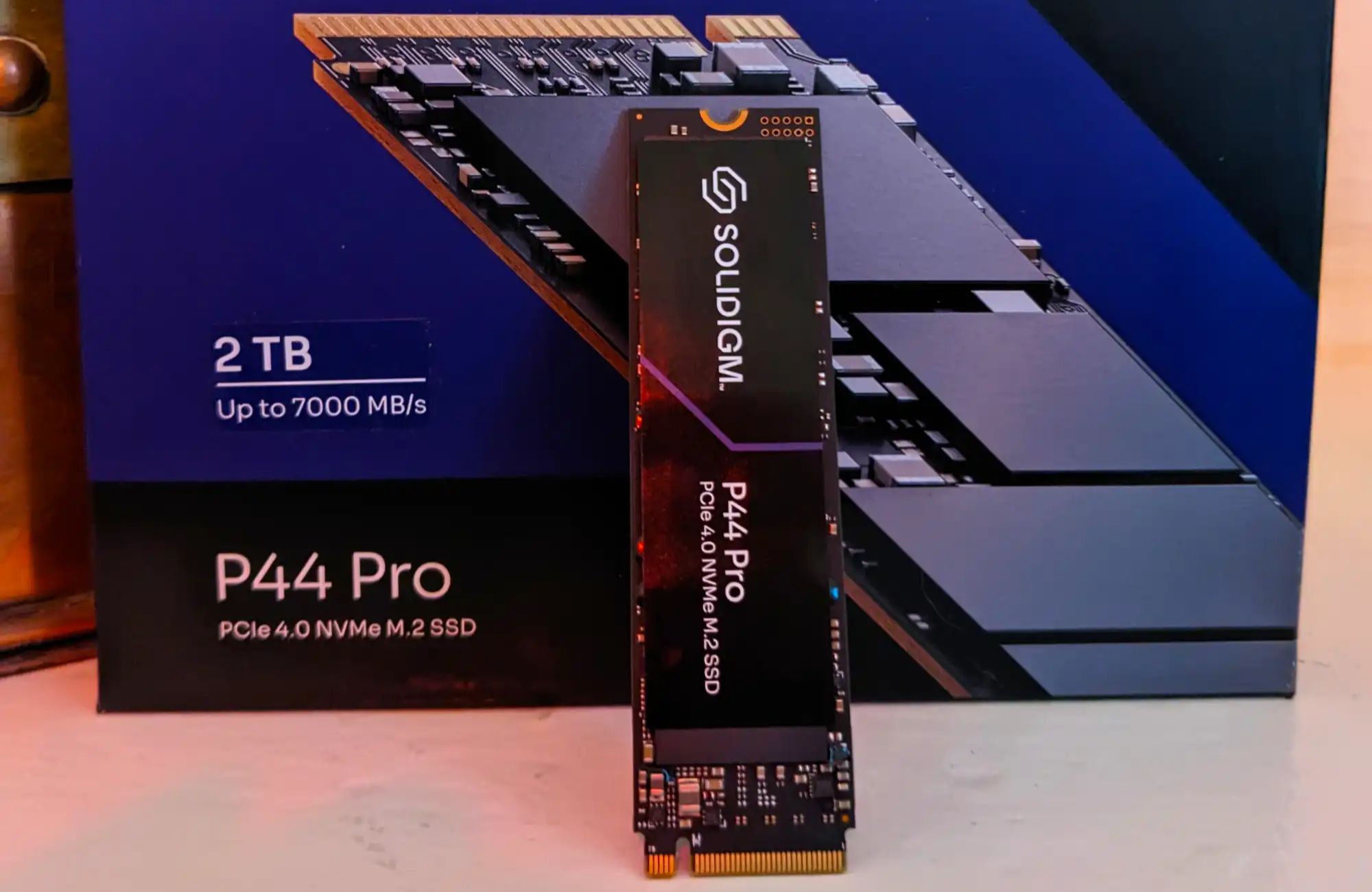Introduction
When it comes to hard disk drives (HDDs), you may have come across terms like SATA I, SATA II, and SATA III. These terms refer to different versions of the Serial ATA (SATA) interface, which is used to connect HDDs to computers and other devices. Understanding the differences between these versions is essential when it comes to choosing the right hard disk drive for your needs.
SATA I, SATA II, and SATA III differ in terms of speed, compatibility, and features. The version of SATA technology used in a hard disk drive determines its performance and capabilities. In this article, we will explore the differences between SATA I, SATA II, and SATA III, and how they impact the overall performance of the hard disk drive.
Before we dive into the details, it’s important to note that SATA II and SATA III are backwards compatible with SATA I. This means that you can use a SATA II or SATA III hard disk drive with a motherboard or device that supports SATA I, although the performance will be limited to the speed of the SATA I interface.
In the next sections, we will take a closer look at each SATA version individually, discuss their speed capabilities, compatibility, features, and improvements over previous versions.
SATA I
SATA I, also known as SATA 1.5Gb/s, was the first version of the SATA interface to be introduced. It was released in 2003 and offered a maximum data transfer rate of 1.5 Gigabits per second (Gb/s) or approximately 150 Megabytes per second (MB/s).
This version of SATA provided a significant improvement over its predecessor, the Parallel ATA (PATA) interface, by allowing for faster and more efficient data transfer between the hard disk drive and the motherboard. SATA I cables also featured a smaller and slimmer design, making them easier to install and manage within computer systems.
One of the main advantages of SATA I is its backward compatibility with older PATA devices. This means that you can use a SATA I hard disk drive with a motherboard that has PATA connections, albeit with reduced performance compared to using a SATA I interface.
However, it’s worth noting that SATA I has limitations when it comes to speed. With a maximum transfer rate of 1.5Gb/s, it may struggle to keep up with the demands of modern applications and large file transfers. As a result, SATA I is typically found in older computer systems or as secondary storage drives where speed is not a primary concern.
In terms of hardware compatibility, SATA I drives can be connected to SATA II or SATA III interfaces, but the transfer rate will be limited to the maximum capabilities of SATA I. On the other hand, if you connect a SATA II or SATA III drive to a SATA I interface, the drive would still function, but the transfer rate will be limited to SATA I speeds.
In summary, while SATA I was a significant advancement over PATA technology, it is now considered outdated and has limited capabilities compared to newer SATA versions. It can still be used in older systems or for non-intensive tasks, but for faster performance and higher data transfer rates, SATA II or SATA III drives are recommended.
SATA II
SATA II, also known as SATA 3Gb/s, is the second version of the SATA interface. It was introduced in 2004 and offered a maximum data transfer rate of 3 Gigabits per second (Gb/s) or approximately 300 Megabytes per second (MB/s). This was a significant improvement over SATA I, doubling the transfer speed.
The increased speed of SATA II allowed for faster and more efficient data transfer between the hard disk drive and the motherboard. This was particularly beneficial for tasks such as transferring large files, running multiple applications simultaneously, and improving overall system responsiveness.
One of the notable features of SATA II is its backward compatibility with SATA I interfaces. This means that you can use a SATA II hard disk drive with a SATA I interface, although the transfer rate will be limited to the speed of the SATA I interface. However, using a SATA II drive with a SATA II interface will result in optimal performance and speed.
SATA II also introduced enhancements such as native command queuing (NCQ) and hot-plugging. NCQ allows the hard disk drive to optimize the order in which data is read and written, improving overall performance and responsiveness. Hot-plugging, on the other hand, enables you to connect or disconnect the hard disk drive from the system while it is running, without the need to reboot the computer.
While SATA II was a significant improvement over its predecessor, it has since been surpassed by SATA III in terms of speed and performance. However, SATA II hard disk drives are still widely available and can be a cost-effective option for those who do not require the maximum transfer speeds offered by SATA III.
In summary, SATA II offers faster data transfer rates and improved features compared to SATA I. It is backward compatible with SATA I interfaces, allowing for easy integration into older systems. However, for users who require even higher speeds and advanced features, SATA III is the recommended choice.
SATA III
SATA III, also known as SATA 6Gb/s, is the latest version of the SATA interface. It was introduced in 2009 and provides a maximum data transfer rate of 6 Gigabits per second (Gb/s) or approximately 600 Megabytes per second (MB/s). SATA III offers twice the speed of SATA II, making it the fastest and most advanced SATA version available.
The increased speed of SATA III allows for lightning-fast data transfer between the hard disk drive and the motherboard. This is especially beneficial for tasks that require high-speed data access, such as gaming, multimedia editing, and large file transfers.
One of the key features of SATA III is its backward compatibility with SATA II interfaces. This means that you can use a SATA III hard disk drive with a SATA II interface, but the transfer rate will be limited to the speed of the SATA II interface. However, when used with a SATA III interface, SATA III drives deliver optimal performance and take full advantage of the increased data transfer speeds.
In addition to its faster speed, SATA III also introduced enhancements like advanced error correction and improved power management. The advanced error correction capabilities ensure data integrity and reduce the chances of data loss or corruption during transfer. The improved power management allows for more efficient energy usage, resulting in lower power consumption and longer battery life in portable devices.
SATA III is the preferred choice for high-performance computing systems, gaming rigs, and professional workstations where data transfer speed is critical. It provides the necessary bandwidth to handle demanding applications and large file sizes, allowing for smooth and responsive performance.
It is important to note that to fully take advantage of the speed and capabilities of SATA III, both the hard disk drive and the motherboard need to support SATA III. If either component only supports SATA II or SATA I, the transfer rate will be limited accordingly.
In summary, SATA III offers the highest data transfer speeds, advanced features, and improved power management compared to its predecessors. It is the ideal choice for users who require top-notch performance and faster data access. However, compatibility with SATA II and SATA I interfaces ensures that SATA III drives can still be used in older systems, albeit at slower speeds.
Speed Comparison
When comparing the speed of SATA I, SATA II, and SATA III, it is important to understand that each version provides different maximum data transfer rates. These rates directly impact the overall performance and speed at which data can be read from or written to the hard disk drive.
SATA I offers a maximum data transfer rate of 1.5 Gigabits per second (Gb/s) or approximately 150 Megabytes per second (MB/s). This speed, although an improvement over previous technologies, may be considered slow for today’s standards. It is sufficient for basic computing tasks and non-intensive applications.
SATA II, on the other hand, doubled the speed of SATA I, offering a maximum data transfer rate of 3 Gigabits per second (Gb/s) or approximately 300 Megabytes per second (MB/s). This increased speed allows for faster data access, smoother multitasking, and improved overall system responsiveness. SATA II is suitable for most consumer-level applications and provides a good balance between performance and cost.
SATA III takes speed to another level by offering a maximum data transfer rate of 6 Gigabits per second (Gb/s) or approximately 600 Megabytes per second (MB/s). This makes it the fastest SATA version available and is ideal for high-performance computing, gaming, and tasks that demand fast and efficient data transfer. SATA III ensures smooth gameplay, faster application loading times, and shorter file transfer durations.
It’s important to note that the actual data transfer speeds achieved may vary depending on various factors, including the specific hard disk drive, the quality and length of the cables used, and the system configuration. Additionally, the performance of a hard disk drive is not solely dependent on the SATA version but also on factors such as the drive’s RPM (rotations per minute) and cache size.
In summary, SATA III offers the highest data transfer speeds, followed by SATA II and SATA I. The increased speed of each version allows for improved performance and efficiency, with SATA III being the fastest and most suitable for demanding applications. However, it is essential to consider the specific requirements of your system and applications to determine the SATA version that best meets your needs.
Compatibility
When it comes to compatibility, it’s important to consider how the different versions of SATA interfaces work together and whether they can be used interchangeably in various systems and devices.
SATA II and SATA III are backward compatible with SATA I interfaces. This means that you can connect a SATA II or SATA III hard disk drive to a SATA I interface, but the transfer rate will be limited to the speed of the SATA I interface. Similarly, you can connect a SATA I hard disk drive to a SATA II or SATA III interface, but it will still operate at SATA I speeds.
It’s worth noting that although backward compatibility is supported, using a newer SATA hard disk drive with an older SATA interface may restrict its performance potential. For example, a SATA III hard disk drive connected to a SATA I interface will not be able to achieve its maximum transfer rate. Therefore, it is recommended to use SATA III hard disk drives with SATA III interfaces for optimal performance.
In terms of physical compatibility, SATA interfaces use the same form factor and connector type, regardless of the version. This means that SATA cables and connectors are universally compatible across all SATA versions. This makes it easy to connect SATA hard disk drives to SATA interfaces without any compatibility issues.
Furthermore, SATA interfaces are widely supported by modern computer systems, including desktops, laptops, and servers. SATA is the standard interface for connecting internal hard disk drives and solid-state drives (SSDs), making it a widely adopted and widely compatible technology in the industry.
It’s important to note that when purchasing a new hard disk drive, it is recommended to check the compatibility specifications provided by the manufacturer. This will ensure that the hard disk drive is compatible with your specific system and SATA interface version.
In summary, SATA II and SATA III interfaces are backward compatible with SATA I, allowing for connectivity between different versions. However, using a newer SATA hard disk drive with an older SATA interface may limit the transfer speed. SATA interfaces share the same physical form factor and connector type, ensuring universal compatibility. SATA has become the standard interface for internal hard disk drives and SSDs, making it compatible with most modern computer systems.
Features and Improvements
As SATA technology has evolved with each new version, various features and improvements have been introduced to enhance the performance, reliability, and user experience of hard disk drives. These advancements have made SATA hard disk drives more efficient, versatile, and user-friendly.
One noteworthy feature introduced with SATA II is native command queuing (NCQ). NCQ allows the hard disk drive to optimize the order in which data is read and written, improving overall performance and reducing latency. This feature is particularly beneficial in scenarios where multiple applications are accessing the drive simultaneously or when dealing with numerous small file transfers.
Hot-plugging, another feature introduced with SATA II, allows users to connect or disconnect the hard disk drive while the computer is running, without the need to reboot the system. This provides convenience and flexibility, especially for users who frequently need to swap or add additional drives to their systems.
SATA III brought several improvements over its predecessors. One of the notable enhancements is advanced error correction capabilities, which ensure data integrity during the transfer process. This helps in minimizing the chances of data loss or corruption, enhancing the reliability and durability of SATA III hard disk drives.
Another improvement introduced with SATA III is improved power management. This allows for more efficient energy usage, resulting in lower power consumption and longer battery life in portable devices. SATA III drives are engineered to optimize power usage while maintaining high performance, making them ideal for laptops and other battery-powered devices.
Furthermore, SATA III includes improvements in the overall transfer speed. With a maximum data transfer rate of 6 Gigabits per second (Gb/s), SATA III provides lightning-fast data access and shorter transfer durations. This is particularly beneficial for demanding applications such as gaming, multimedia editing, and data-intensive tasks in professional workstations.
It’s worth noting that the specific features and improvements may vary depending on the manufacturers and models of SATA hard disk drives. Therefore, it’s essential to consider the specifications and capabilities of individual drives when selecting a hard disk drive for your specific needs.
In summary, SATA II introduced features like NCQ and hot-plugging, which enhance performance and usability. SATA III, on the other hand, brought advancements such as advanced error correction, improved power management, and higher transfer speeds. These features and improvements have made SATA hard disk drives more efficient, reliable, and versatile, catering to the demands of modern computing environments.
Conclusion
Understanding the differences between SATA I, SATA II, and SATA III is crucial when selecting a hard disk drive for your system. Each version of the SATA interface offers distinct advantages and considerations in terms of speed, compatibility, and features.
SATA I, the oldest version, provides a maximum data transfer rate of 1.5Gb/s, making it suitable for basic computing tasks and older systems. It is backward compatible with SATA II and SATA III, allowing for easy integration into newer systems with faster SATA interfaces.
SATA II doubles the speed of SATA I, with a maximum transfer rate of 3Gb/s. It offers improved performance and features like native command queuing (NCQ) and hot-plugging. SATA II strikes a balance between cost and performance, making it a popular choice for most consumer-level applications.
SATA III is the fastest SATA version with a maximum transfer rate of 6Gb/s. It provides enhanced features such as advanced error correction, improved power management, and higher data transfer speeds. SATA III is ideal for high-performance computing, gaming, and tasks that demand fast and efficient data access.
When considering compatibility, SATA II and SATA III are backward compatible with SATA I interfaces. Physically, all SATA versions use the same form factor and connectors, ensuring universal compatibility with modern computer systems.
Ultimately, the choice between SATA I, SATA II, and SATA III will depend on your specific needs and requirements. If you have an older system or basic computing needs, SATA I or SATA II may be sufficient. However, for those seeking top-notch performance and faster data access, SATA III is the recommended choice.
It’s also important to consider other factors like the specific hard disk drive model, rotational speed, and cache size when selecting a hard disk drive. Furthermore, as technology continues to advance, it’s worth keeping an eye on newer interface options, such as SATA Express or NVMe, which offer even higher speeds and improved performance.
In conclusion, understanding the differences between SATA I, SATA II, and SATA III along with their unique features and improvements will help you make an informed decision when choosing a hard disk drive that best suits your needs.







